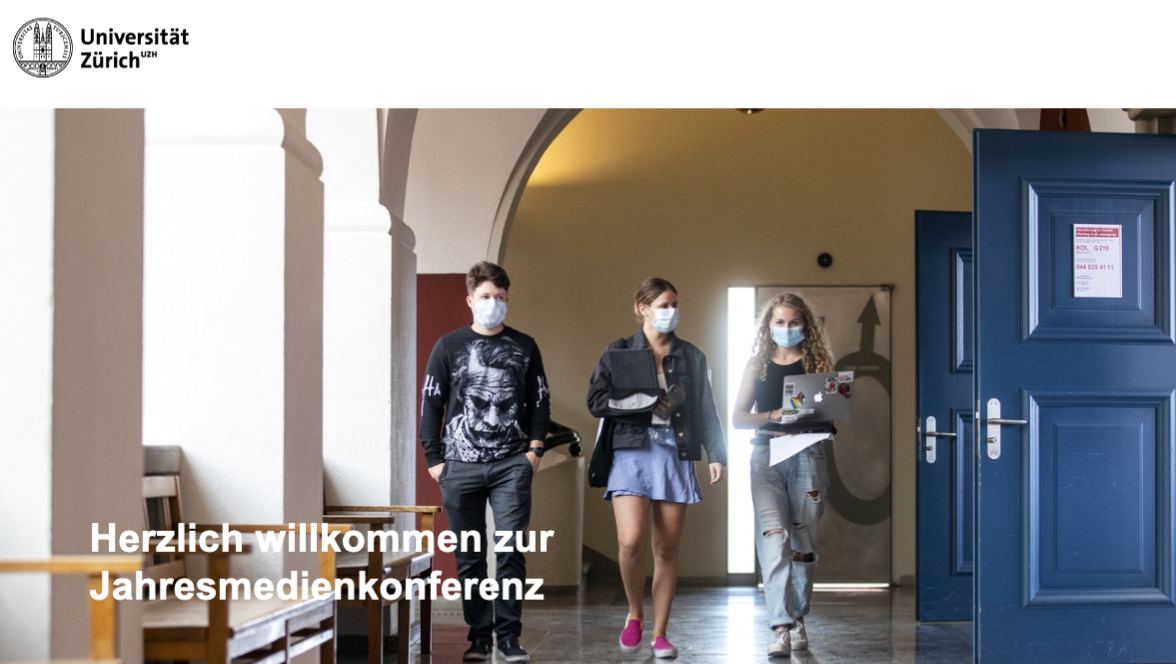Toward a More Digital, Sustainable and Diverse Future

The coronavirus pandemic posed a massive challenge for university teaching. A survey conducted at UZH showed that adapting teaching materials for online use and supporting students through virtual channels hugely increased the workload of teaching staff. Students also found their workloads increased at the same time as their efficiency when studying at home decreased. More students than usual became disengaged and demotivated. This was reflected in the tendency for students to register for numerous modules and then not complete all of them. Due to the loss of campus interactions and social life, many found themselves stuck in subject-specific bubbles, and lost the interdisciplinary exchange which is normally an important element of university life. Nevertheless, teaching staff and students are on the whole positive and curious about the possibilities of digital teaching.
Exploiting potential for innovation and digital transformation
Thus, the pandemic also offers a historic opportunity. In recent years, blended learning, i.e. a mix of online and face-to-face classes, happened only sporadically at UZH. Since March 2020, the university has been in a phase of forced experimentation. “We want to use the experience we’ve gained and the great potential for innovation and digital transformation to further develop high-quality teaching beyond the emergency mode,” says UZH President Michael Schaepman at the annual media conference. “Targeted use of face-to-face teaching will have as much a place as portions of online teaching.”
Getting the right mix
In higher education, hybrid teaching and learning formats are more effective than pure online instruction. The on-campus component is the vital core of university education, but combining it with online provision can allow students to take a more individualized approach to learning. It is important that such blended learning programs include a high level of interactivity coupled with a carefully planned schedule. Online formats should be geared to the respective level of study: While well-guided self-learning units may be suitable for students earlier in their studies, space for interaction and discussion are important for more advanced students.
Permeable, integrative and inter-connected
Digital options to complement face-to-face classes can increase the flexibility, mobility and accessibility of higher education: “By being independent of time and location, learning becomes more flexible, so that teaching and studying can be made more open and interdisciplinary for all target groups,” says Schaepman.
The coronavirus pandemic thus ultimately gives new impetus to efforts for more permeability, integration and networking – developments that have been actively promoted in the European Higher Education Area for several years. UZH and Switzerland as a non-EU-member state must also position themselves with regard to these developments.
More sustainable and diverse
The pandemic has also provided an important boost to sustainability. In 2020, for example, there was a significant decrease in air travel by UZH employees, and the associated greenhouse gas emissions fell from 7,587 tonnes of CO2 in 2019 to 1,670 tonnes of CO2 in 2020. The aim is to maintain this level of reduction so that UZH’s ambitious climate goal of being carbon neutral by 2030 can be achieved.
Diversity is also on the increase: The composition of the professorial staff is now much more diverse than in previous years. In 2020, for example, 42 percent of new professorial appointments at UZH were women (up from 24 percent the previous year). The 55 new professors in 2020 came from 13 different countries.
Student numbers increased sharply in the last 20 years
In the Fall Semester of 2020, 27,656 students were enrolled at UZH (up 4.6 percent from 26,438 in the previous year). Around 4,600 of these students come from abroad, primarily from German-speaking countries as well as from China, Italy and the USA. The total number of students has thus again increased significantly compared to previous years. “Overall, we have seen an increase of 7,039 students over the last 20 years, which is 34 percent,” comments Stefan Schnyder, Vice President Finances and Human Resources. The strongest influx has been seen in STEM subjects (+70 percent since 2010) and medicine (+50 percent since 2010). For the year 2035, it is predicted that UZH will have just under 33,300 students if growth remains strong, or 30,300 students if further growth is weaker. “In order to continue to offer these students a high-quality education in the future, we need to set the course today in terms of personnel and teaching planning as well as infrastructure and finances,” says Schnyder.
